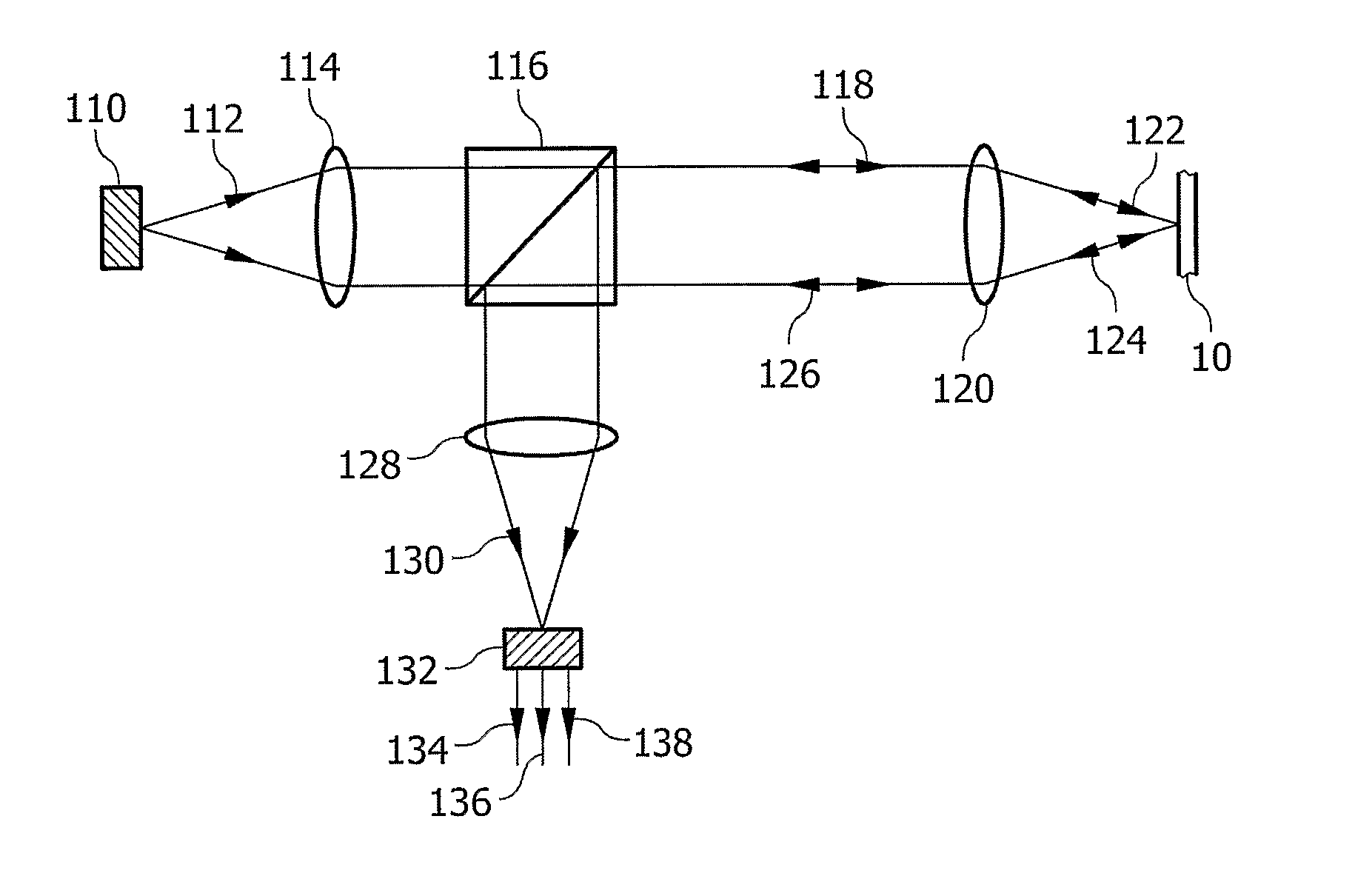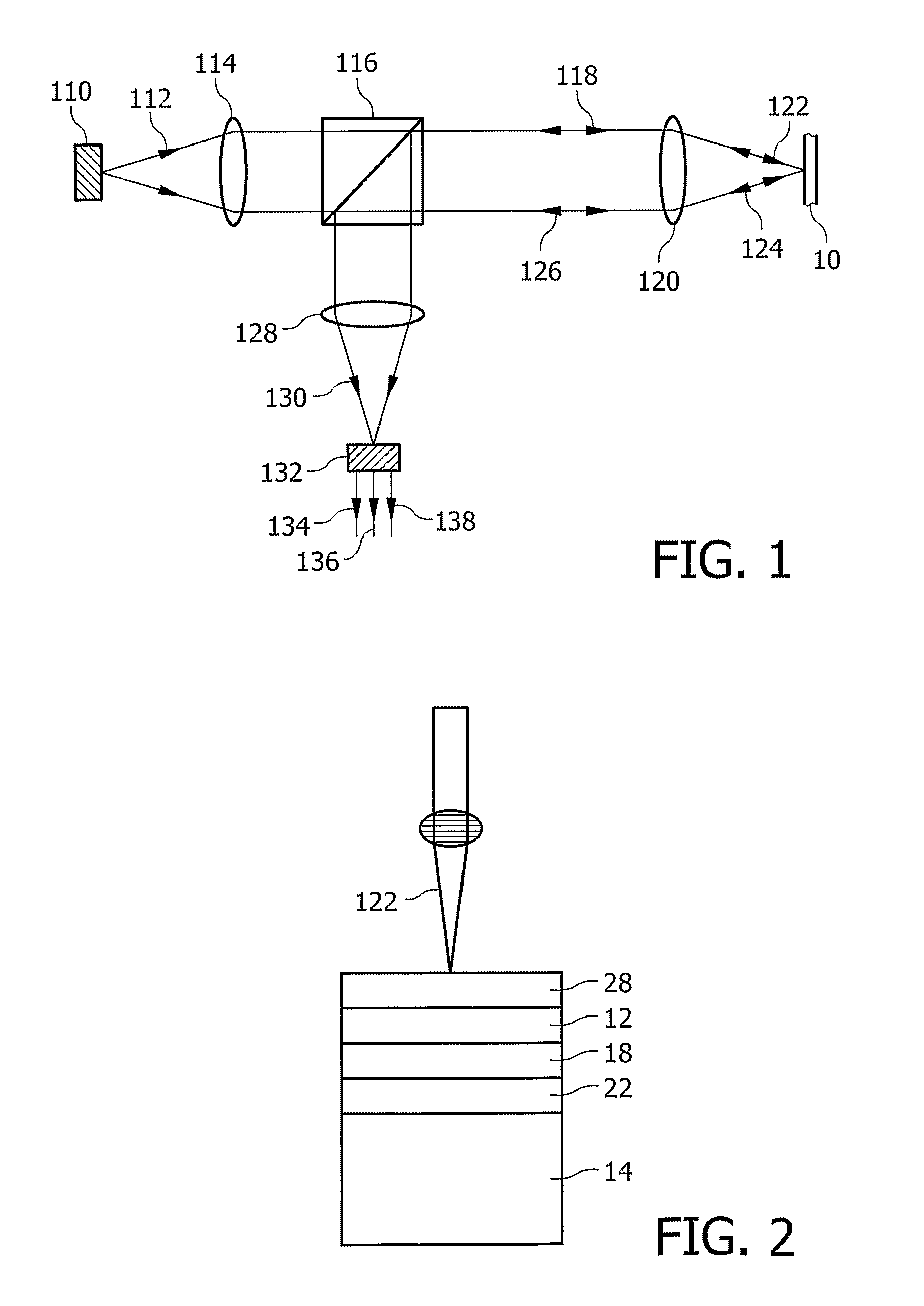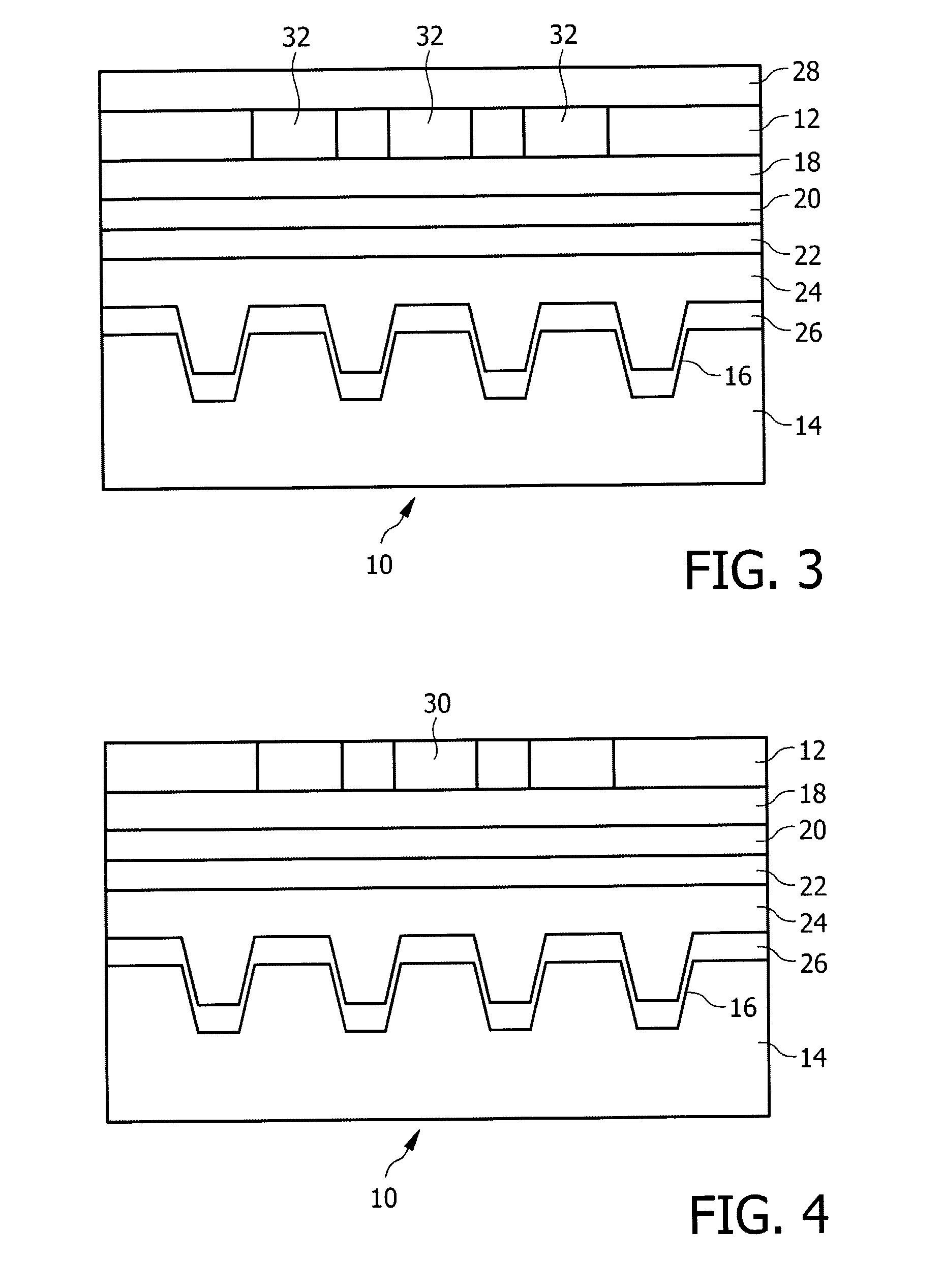Method Of Writing Data On A Master Substrate For Optical Recording
- Summary
- Abstract
- Description
- Claims
- Application Information
AI Technical Summary
Benefits of technology
Problems solved by technology
Method used
Image
Examples
Embodiment Construction
[0049]FIG. 1 shows a schematic set-up of a conventional optical disc drive that can be employed with the present invention. Although the setup is described on the basis of a conventional optical disc drive and a pre-grooved substrate, the present invention can also be employed with a laser beam recorder (LBR) and with substrates having no pre-grooves. A radiation source 110, for example a semi-conductor laser, emits a diverging radiation beam 112. The beam 112 is made essentially parallel by a collimator lens 114, from which it is projected to a beam splitter 116. At least a part of the beam 118 is further projected to an objective lens 120 which focuses a converging beam 122 onto a master substrate 10. The master substrate 10 will be described in detail with reference to the Figures below. The focused beam 122 is able to induce a phase change in the recording layer of the master substrate. On the other hand, the converging beam 122 is reflected into a diverging beam 124 and is then...
PUM
 Login to View More
Login to View More Abstract
Description
Claims
Application Information
 Login to View More
Login to View More - R&D
- Intellectual Property
- Life Sciences
- Materials
- Tech Scout
- Unparalleled Data Quality
- Higher Quality Content
- 60% Fewer Hallucinations
Browse by: Latest US Patents, China's latest patents, Technical Efficacy Thesaurus, Application Domain, Technology Topic, Popular Technical Reports.
© 2025 PatSnap. All rights reserved.Legal|Privacy policy|Modern Slavery Act Transparency Statement|Sitemap|About US| Contact US: help@patsnap.com



